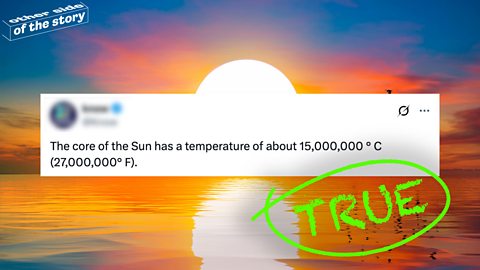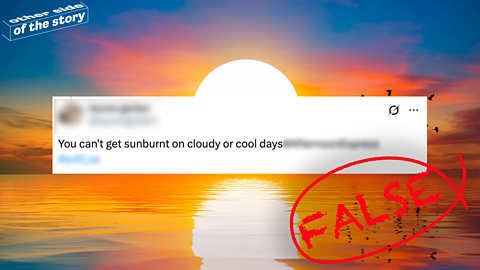We don't get as many sunny days as we'd like in the UK, but that doesn't mean we aren't OBSESSED with the Sun.
In the last year alone on TikTok, there have been more than 250k posts in the UK using the hashtag #sun.
So lets pop on our sunglasses, apply that sunscreen and take a closer look at some sunny facts and debunk those shady myths…

Did you know that the Sun isn't actually yellow, red or orange? If you were to observe the Sun from space you would notice that it's actually all the colours of the light spectrum mixed together, which our eyes see as white.
When sunlight passes through the Earth's atmosphere shorter wavelengths of light (blue and violet) scatter more, leaving the Sun to appear more yellowish to our eyes.
Remember, it’s important never to look directly at the Sun without the correct equipment.

The official highest temperature ever recorded on Earth is 56.7C, but that's chilly compared to the Sun, where temperatures can reach a spicy 5,500C at the surface! The Sun's core gets much hotter, at around 15 million degrees Celsius – to put that into perspective it's 1,500 times hotter than the lava running under Mauna Loa, the largest volcano on Earth and 300 times hotter times hotter than the Earth's core, which is around 6,000°C.

If you think you can’t get sunburnt if it’s cloudy or cool, then think again! The Sun’s rays are often strongest between mid-March and mid-October, so it’s always best to wear sunscreen when outdoors during these months. Over exposure to UV rays causes harm to your skin.
Misinformation about the Sun
With so many posts about the Sun on socials, especially during the warmer months, it's likely that not everything you see and read will be true, which can lead to misinformation being spread and shared online. When you read and watch content on your socials, think before you share. Do your own research and check that the information comes from trusted sources and experts.
This article was published in April 2025.

Not sure if the news you’re seeing on social media is true or false? Can you always tell if the things you see online are real or fake? Learn how to get the other side of the story with our quizzes, videos and explainers.


